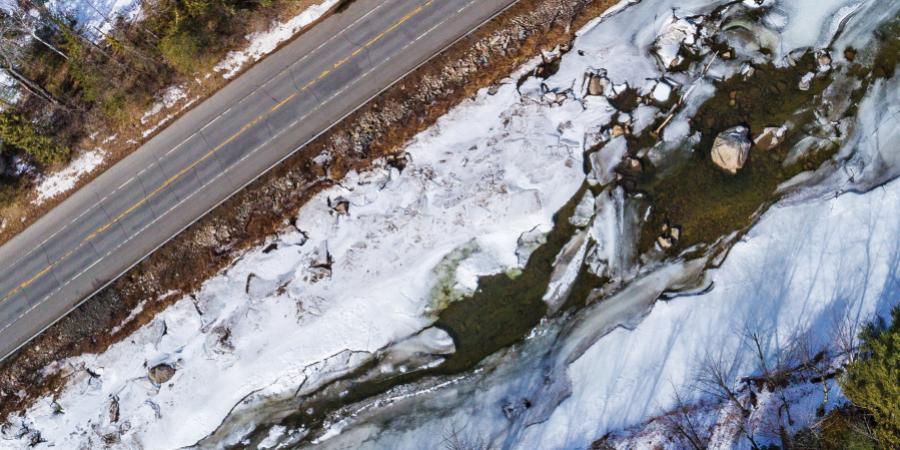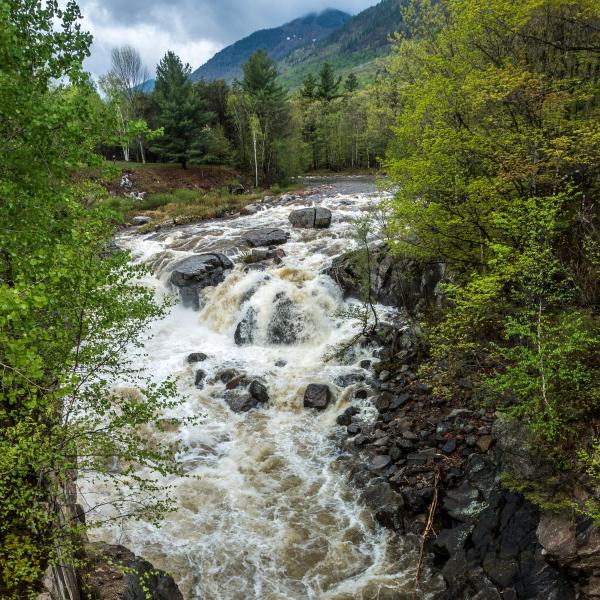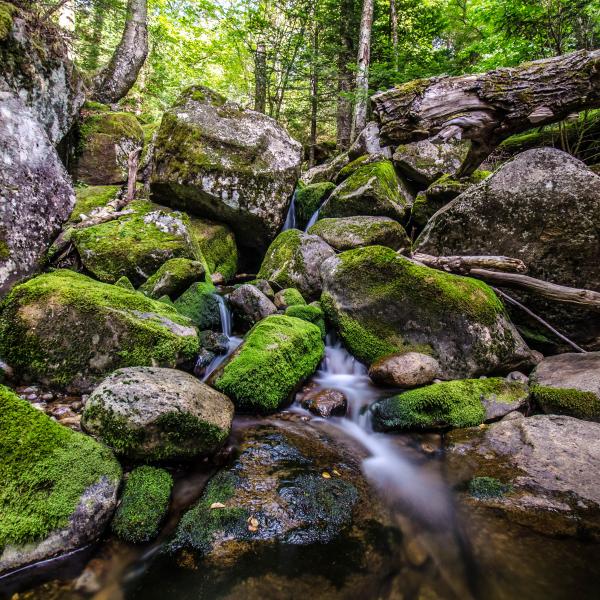The Threat
The streams, rivers, and lakes in the Ausable watershed and neighboring watersheds are freshwater ecosystems that naturally contain very low amounts of sodium and chloride. The application of road salt, primarily sodium chloride, to roads during winter often results in a significant amount of this pollutant entering our local waterways. Some of our local lakes in more developed areas, such as Mirror Lake and the Cascade Lakes, have chloride levels greater than 160-times that of lakes not impacted by road salt.
Our Response
SCIENCE – From 2015 to 2022, the Freshwater Center (AFC) conducted intensive field research to understand the impacts of road salt on Mirror Lake, the gem of Lake Placid. This work was made possible by multiple grants and was conducted in partnership with the Adirondack Watershed Institute of Paul Smith's College (PSCAWI). In 2015-2016, we found evidence that Mirror Lake was experiencing a reduction in spring mixing due to salt-induced density differences within the water column. In 2019, thanks to a Lake Champlain Basin Program/NEIWPCC technical grant, funds from the Village of Lake Placid, the Adirondack Foundation, North Elba LEAF, and the Mirror Lake Watershed Association, we pursued a detailed multi-year study of salt impacts.
The primary objectives of the intensive study were to 1) establish a continuous water quality monitoring program capable of quantifying de-icing salt pollutant load to Mirror Lake and the Chubb River, 2) estimate the de-icing salt pollutant load to Mirror Lake from direct stormwater runoff, 3) estimate the total amount of de-icing salt applied within the Chubb River watershed, and 4) educate the public about the effects of de-icing salt on the environment and BMPs for de-icing salt reduction. Integral to data collection was the creation of a continuous monitoring station network deployed around Mirror Lake and the Village of Lake Placid monitoring all inflows and outflows of the lake. The five stations included data loggers that recorded stage, conductivity, and temperature every 30 minutes through June of 2022 when the intensive study ended. Discrete monitoring of stormwater entering the lake was also conducted during this period and drew upon a delineation of the watershed area that drains to each stormwater outfall entering Mirror Lake. De-icing salt application within the watershed was estimated through municipal salt tracking devices, and a salt survey was distributed to businesses and residents. This data was supplemented by the long-term bi-weekly monitoring of Mirror Lake, begun in 2016 and ongoing today, and the data being collected from a research buoy on Mirror Lake in partnership with scientists from Rensselaer Polytechnical Institute. One visible outcome of our study was a series of four educational panels stationed around Mirror Lake providing background on the lake's health, salt reduction science, and pathways forward.
Here's a summary of findings form the 2019 - 2022 study.
Utilizing data from the continuous monitoring system with the Chubb River, we estimate that over 1,000 metric tons per annum of chloride were exported from the Chubb River subwatershed from anthropogenic sources, primarily road de-icing salt. For Mirror Lake, we estimate that approximately 90 metric tons of chloride from anthropogenic sources are exported from the watershed annually. Utilizing municipal salt tracking data gathered by our study, previously published estimates of salt application to state roads, and considering lake chloride retention, we estimate that a minimum of 15-16% of the annual de-icing salt load comes from local roads, 33-35% from state roads, 3-4% from sidewalks, and 42-49% is unaccounted for. The unaccounted salt likely originates from commercial and private applications to sidewalks, driveways, and parking lots. This underscores the importance of addressing these sources of de-icing salt in urban environments. The stormwater data indicates that the highest loads of chloride entering the lake come from the western side. The current data suggest that de-icing salt reduction practices and stormwater improvements in the watershed are working. Still, the lake would benefit from further reductions in de-icing salt application.
In the end, what we learned is the importance of engaging not just state agencies and town road crews, but everyone who grapples with snow and ice in the winter. Reducing salt applications on roads, sidewalks, driveways and parking lots can be balanced with public safety, and alternatives exist.
Next Steps 2022 to 2025
In partnership with the Adirondack Watershed Institute, we're continuing to monitor Mirror Lake every other week to understand the effects of significant efforts by the Village of Lake Placid to curb the instrusion of road salt into the lake. We're hoping to see the scales tip and Mirror Lake return to regular spring turnover. The Ausable Freshwater Center (AFC) also continues regular monitoring of other lakes that serve as references for Mirror Lake and we monitor sites along the Ausable River and its branches bi-weekly to identify changes. We're lucky to continue this work and move this scientific knowledge and data to the community so we can all better steward our freshwater resources. Funding from the Adirondack Foundation and North Elba LEAF makes our work possible.
Increasingly, our focus on this issue is education and outreach – moving science forward to find practical solutions. We continue to work with our municipalities, our staff attend conferences and share data with partners and researchers, we work with experts in the field of salt alternatives and monitoring, and we're teaming up with AdkAction to support the Clean Water Safe Roads campaign.
What You Can Do
- Sign the Clean Water Safe Roads pledge and add your efforts to protecting all our waters.
- Reduce the use of road salt at your home, office, and place of business.
- Discuss your concerns with your town, county, and state representatives in person, by writing letters, or by attending public meetings.
- Stay informed by signing up for AFC's e-newsletter at the bottom of the page.




